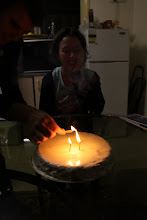In the essay ‘Theatre Country’ Geoff Park, an ecological historian, traces how current notions of the scenic, and therefore, attitudes toward conservation in New Zealand are linked to the ‘museal imperatives’ of the 19th Century British Empire (126). This argument of course centres around thinking about vision as affected by a lens of a particular time, culture and politics. This museal lens through which we see ‘country as landscape’ (113) means that the act of looking is also an act of curatorship, of the archiving in memory of place separate from function, and the aestheticisation of the land as an object.
This so-called ‘museal’ lens might be contextualised through thinking about the museum as a space. Adorno points out that the words museum and mausoleum share more than a similarity in sound; the objects of the museum ‘no longer have a vital relationship’ with the observers; the clear location of the objects of the museum in the past sets them out as dead or dying, (Adorno qtd. by Cormack, online resource). How then might this reading of the museal lens be imported into a conversation about the landscape? There seems to be a parallel between the function of the museal lens over the landscape and attitudes towards buildings in the 19th Century. 19th Century thinker Violet-le-Dûc’s saw buildings or ruins as an ‘incomplete piece of a potentially complete whole’ (Vidler, 151, italics added). Ruskin’s thoughts, in contrast to Violet-le-Dûc’s, were that buildings should be maintained (relative to function) but that the idea of a restoration to a prior whole was impossible; firstly, because this idea of restoration tried to deny the passage of time, and secondly because it was based on a returning to an ‘original’ object, the idea of which had also been altered by the passage of time, the original could never really be known. There is a link here with what Carolyn Steedman has posited as a psychoanalytic perspective of trace, that ‘the very search for what is lost and gone…alters it, as it goes along, so that every search becomes an impossible one’ (77). This attitude toward the fragment is that it becomes a ‘remainder of the past, once whole, now fractured and broken…it has the connotations of nostalgia and melancholy, even of history itself’ (Vidler, 2001, 151).
If scenic landscapes are read as scenic because they refer to some idea of an “original” or untamed space, then perhaps this lens is functioning, as Park points out, to both serve testament to ‘the prosperity and greatness of the European industrial age’ from which it sprung (115) but also to indulge a sentimentalised relationship with place (118); environments which had been made strange through the sprawl of the suburb during the industrial revolution, become sites festering with nostalgia, and with this, running rife is the desire to preserve or return certain environments to idealised notions of original, past existence. The constructed nature of this past environment is not dissimilar to the constructed nature of the contents of the museum and the cultures that it displays.
Works Cited
Cormack, Emily. ‘Dying Twice’ STARKWHITE. Starkwhite Gallery. Accessed 18/05/08
Park, Geoff. “Theatre Country” in Theatre Country: Essays on Landscape and whenua, Wellington: Victoria University Press, 2006, pp 113 – 127
Steedman, Carolyn. Dust: The Archive and Cultural History. New Brunswick, New Jersey: Rutgers University Press, 2001.
Vidler, Anthony. The Achitectural Uncanny: Essays in the Modern Unhomely. Cambridge, Mass: MIT Press, 1992
